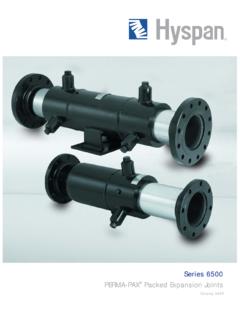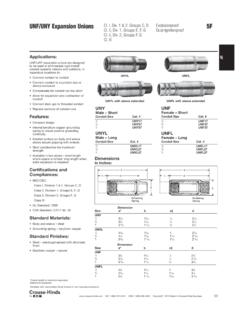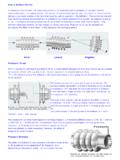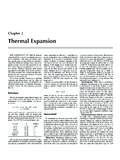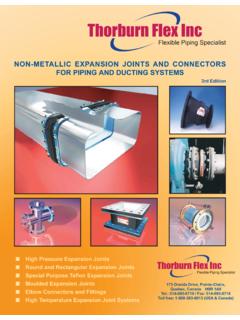Transcription of Thermal Expansion - vip-ltd.co.uk
1 Thermal Expansion Because of the temperature of the flowing media or the surrounding ambient temperature (including solar gain and wind chill), all vessels and pipes ensure a direct proportion of Expansion or contraction. This rate of Expansion or contraction can be mathematically calculated via this formula: X = L x (T1 - T2) x CExp Where: X = Expansion or contraction (m) L = Length of pipe or vessel (m) T1 = Starting temperature ( C) T2 = Final temperature ( C) CExp = Coefficient of Thermal Expansion The table to the right shows the Coefficients Of Thermal Expansion for various common materials. EXAMPLES Examples of Thermal Expansion rates over a temperature range of 0 C to 82 C: Carbon Steel = Copper = Stainless Steel (Austenitic) = Expansion rates of the common materials shown in the table above, after various temperature changes, are as follows.
2 Coefficients Of Thermal Expansion For Common Pipe Materials Plastics Metals Material Coefficient Material Coefficient Copper x 10-6 ABS 100 x 10-6 Carbon Steel x 10-6 PVCU 80 x 10-6 Stainless Steel (Austenitic) x 10-6 PVCC 70 x 10-6 Stainless Steel (Ferritic) x 10-6 PE 200 x 10-6 Cast Iron x 10-6 PP 150 x 10-6 Temperature Change Rates Of Thermal Expansion For Common Pipe Materials (mm/m) C Copper Carbon Steel Stainless Steel Cast Iron ABS PVCU PVCC PE PP 10 20 30 40 50 60 70 80 90 100 110 120 130 140 150 160 170 180 190 200 210 220 230 240 250 260 270 280 290 300

